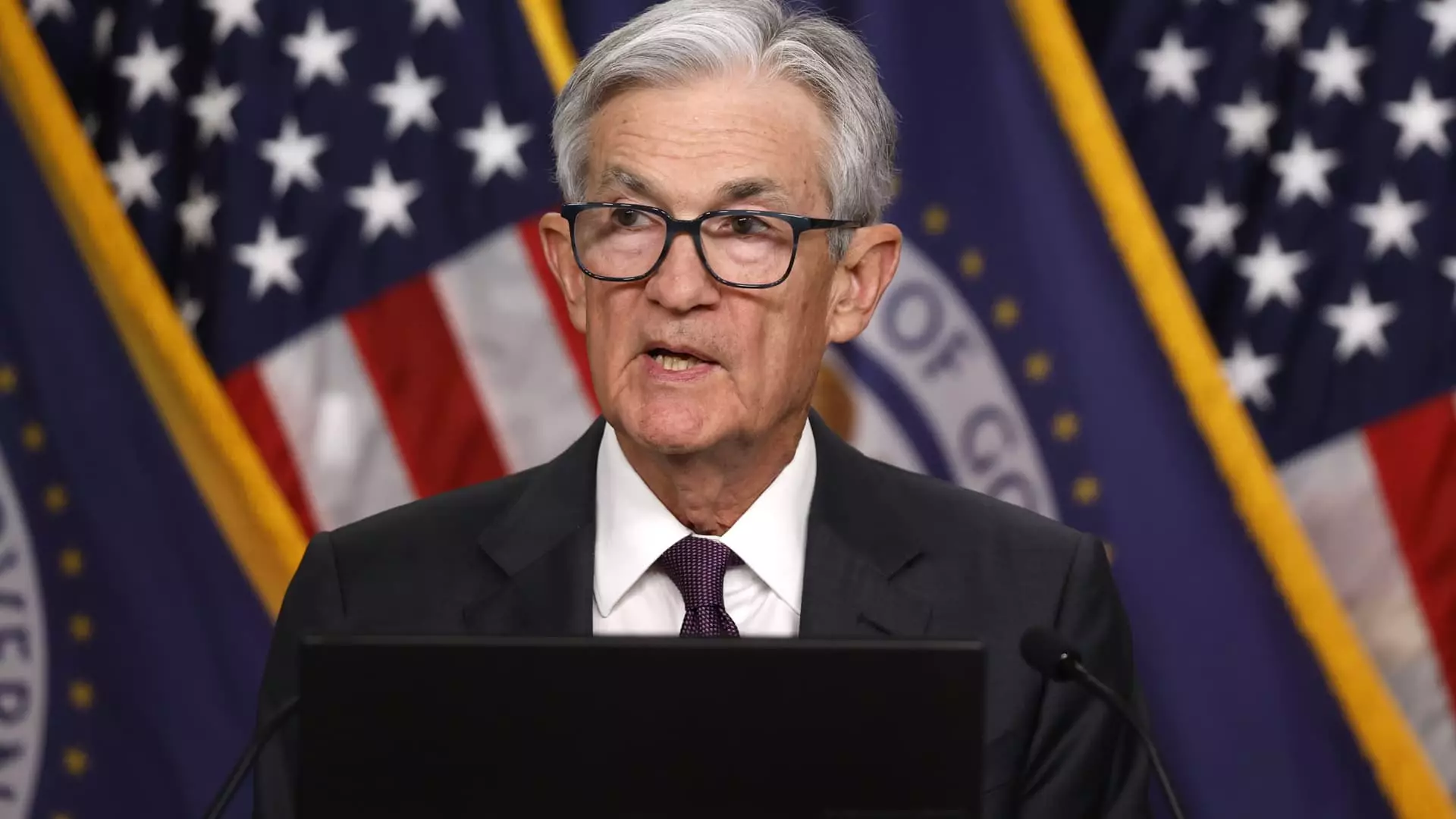The recent decision by the Federal Reserve to maintain its key interest rate between 4.25% and 4.5% may have slipped under the radar for many, yet it signifies a critical moment in the socio-economic fabric of the United States. As the nation grapples with complex political dilemmas stemming from the Trump administration’s trade policies, the Fed’s choice reflects a broader concern about a sputtering economy riddled with uncertainty. The prevailing sentiment is that of anxiety, where the intertwined fates of trade policy and economic prosperity hold significant implications for everyday Americans.
Chair Jerome Powell’s careful articulation of the Fed’s stance reveals the precarious balancing act facing policymakers today. With inflation and unemployment bubbling under the surface as dual mandate concerns, the Fed is caught in a tempest of potential economic shifts. The post-meeting statement specifically warned that “uncertainty about the economic outlook has increased further,” raising alarms over the dire implications a trade shock could pose. This lack of clarity is not just bureaucratic jargon—it’s a rude awakening for people who depend on stable prices and employment for their economic well-being.
Interpreting the Risks of Stagflation
The specter of stagflation—the alarming combination of stagnant growth and rising inflation—helps to underline why the Fed is reluctant to alter interest rates hastily. Historically, stagflation has been a nightmare for policymakers, particularly since its gravity has largely faded from memory since the early 1980s. The Fed’s unease about the potential for tariffs to spur inflation while simultaneously throttling economic growth presents a chilling scenario we could be on the verge of confronting.
As the Fed navigates this minefield, it’s imperative that we scrutinize the implications of such a predicament on American households. Increased prices, particularly on imports affected by tariffs, lead to everyday essentials becoming more expensive, while stagnant wages curb purchasing power. The undeniable reality is that every time the Fed delays a decision, it tightens the noose around the average consumer’s budget.
The Mixed Signals From Economic Indicators
The juxtaposition of economic indicators seems to be a game of tug-of-war at the moment. On one hand, squishy job growth over the past months, including a lift of 177,000 nonfarm payrolls in April and a steady 4.2% unemployment rate, portrays a resilient labor market. On the other, Gross Domestic Product contracts raise eyebrows about the underlying economic health. A drop in GDP often signals a coming recession, leaving workers vulnerable, hesitant, and anxious about their financial future.
Despite these mixed signals, Wall Street maintains that the economy will rebound, with optimism slanting their forecasts toward growth in subsequent quarters. Yet optimism feels frail and easily disrupted by breaking news headlines about tariffs. This raised anxiety has led to volatility in the market, essentially making the economy a victim of external policy shifts while leaving consumers and workers shouldering the consequences. How can anyone find assurance when markets react to trade negotiations like an audience at a circus, entranced by dysfunctional chaos?
Parsing the Fed’s Lack of Action
Market sentiment leading up to the Fed’s meeting indicated little appetite for immediate action, with traders leaning heavily toward a status-quo approach. The Fed’s unanimous decision not to cut rates may bring comfort to some, promoting a sense of stability. Still, it underlines an unsettling dependency on the unpredictable trade environment. The central bank expresses a hopeful tone while holding out against the trade war’s impending storm, which only amplifies uncertainty.
What does this mean for consumer credit, auto loans, and mortgages? Essentially, maintaining a steady hand may initially seem favorable for borrowers; however, a future rate cut could be offset by other negative trends, including runaway inflation driven by increased prices for goods. The very structure of American lives hangs in the balance when we consider the long-term ramifications of these decisions.
The Everyday Consequences We Can’t Ignore
As everyday citizens navigate this financial landscape, understanding the Fed’s actions and the tangled web of tariffs is crucial. Tariffs and trade policies may seem abstract concepts in broader economic discussions, but they filter down into our grocery bills, heating expenses, and savings accounts. Each percentage point in interest rates directly impacts disposable income and consumer confidence—two elements crucial to fostering economic growth.
Balancing the dichotomy of macroeconomic policy with concrete daily impacts cultivates a more informed electorate that can question the motivations behind administrative policies. As the Fed continues to navigate treacherous waters, it holds not just the weight of the economy, but the livelihoods of millions in its hands. The conversation must shift from vague analyses of central banking to how these choices reverberate through the lives of the working-class individuals who see their dreams deferred due to unyielding economic pressures. Every decision made in Washington has a trickle-down effect, and it is the responsibility of all engaged citizens to hold leaders accountable for the outcomes they create—be it positive or negative.

